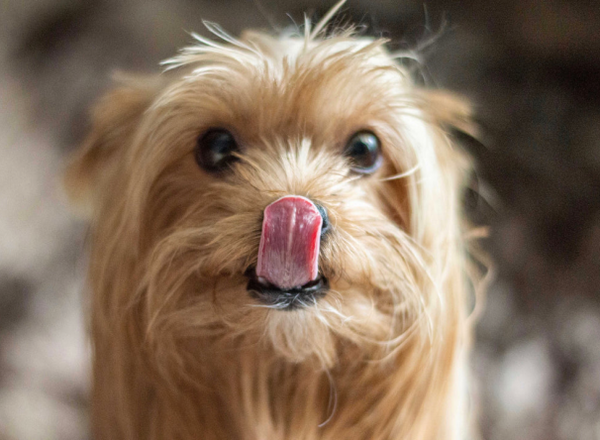
They might be the furriest members of the family (well, hopefully anyway) but that doesn’t mean they don’t feel the cold when it really bites. And because they can’t simply say ‘I’m cold’, we need to take note of other signs.
So here are the biggest and most useful clues to say a coat (or a spot beside the heater) is required…
Cold Clue #1: Take their temperature. Just not in ‘that’ way.
Their body’s response to feeling too cold is to send all their circulation away from their skin to their internal organs. We do the same thing! The result is that their extremities like their ears and feet will feel quite cold to touch. But how cold? They will feel almost fridge cold.
Verdict: Cold feet and ears? Consider an extra layer.
Cold Clue #2: Body language says a surprising amount.
While they do shiver like us, this becomes a less reliable sign when you realise they’ll also shake when they’re anxious. Instead, I prefer to use their posture as a more useful clue…

You see, while warm cats or dogs will sprawl flat across the floor or even lie on their backs exposing ALL of their belly (yes…it’s a lot), their ‘I’m kinda cold’ position is different. They’ll curl themselves up like a croissant and tuck their legs in to form a tight ball; trapping that body warmth. Cats will even wrap their tail around their body like a scarf! So if you see a croissant rather than a breadstick, clothing…or a heater might help.
Verdict: Sleeping more like a croissant rather than a breadstick? A coat or jumper might do the trick.
Cold Clue #3. Their coat type counts
Their coat is the definition of keeping warm the natural way. And the big question is…single or double coat?
You can check by simply parting the fur and seeing if there’s just a single layer of shiny hair (single coat) or whether there’s also a fluffy, soft layer between those hairs and the skin.
Notable single coaters are Greyhounds, Whippets, Boxers, Cavaliers, Poodles, Pugs and Jack Russells.
Double coaters include Kelpies, Cattle dogs, Huskies, Malamutes and German Shepherds.
For cross-breeds…you might need to check the coat type they’ve inherited using the test above.
For cats, long-haired breeds definitely have extra protection against the cold but most cats will be heat seekers and insist on that warm spot.
Obviously, double coats provide that insulation they need to handle the cold. It’s almost like they’re already wearing thermals under their regular clothes.
Verdict: Only have the single coat and spending time away from heating? Give them a layer on cold days.

Cold Clue #4. Their body type is a big deal
This might be a surprising one. But body shape really matters when it comes to cold sensitivity. The smaller and skinnier they are (think Chihuahuas, Whippets, Fox Terriers, Italian Greyhounds…and Puppies and Kittens!) the harder it is for them to keep warm. Why? Well, it’s a mathematical thing. They actually have a higher ratio of skin exposed to the cold compared to larger, more solid pets. Fun fact: This is actually why you almost never see really small animals in Antarctica or the Arctic. Basically a polar bear handles the cold better than a mouse!
Verdict: Small and thin? A coat or jumper will be a big win.
What about exercising in clothing? This is an important one. If you’re doing anything more strenuous than a slow walk, take that coat or jumper off before you start. Coats and jumpers can actually cause them to overheat and even experience heat stress in the middle of winter.
Did you know? Keeping themselves warm in cold weather consumes an enormous amount of energy and just like us, puts a lot of stress on their immune system. Boosting them with the right mix of proteins, zinc, vitamin B and C can help them to ward off any winter bugs going around. Those nutrients also help them maintain their own winter coat…
 FREE 3 Rolls of Poop Bags
FREE 3 Rolls of Poop Bags
 FREE Pooch Pouch
FREE Pooch Pouch
 FREE 3 Rolls of Poop Bags
FREE 3 Rolls of Poop Bags
 FREE Pooch Pouch
FREE Pooch Pouch

















